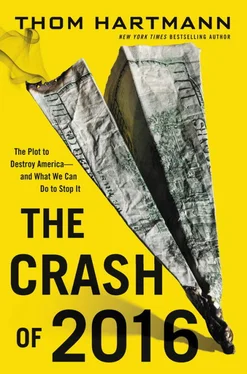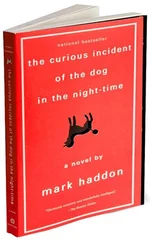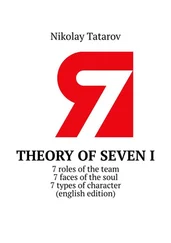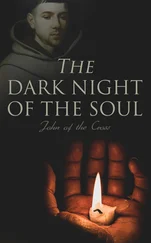In his First Inaugural in 1933, FDR alluded to the “rulers of the exchange of mankind’s goods” who had “failed.”
He told the nation, “Practices of the unscrupulous money changers stand indicted in the court of public opinion, rejected by the hearts and minds of men.”
He added, “True they have tried, but their efforts have been cast in the pattern of an outworn tradition. Faced by failure of credit, they have proposed only the lending of more money.
“Stripped of the lure of profit by which to induce our people to follow their false leadership, they have resorted to exhortations, pleading tearfully for restored confidence.
“They know only the rules of a generation of self-seekers. They have no vision, and when there is no vision the people perish.”
Roosevelt understood that while genuine kings and theocrats had been pushed to the fringes of the world in the century and a half since the American Revolution, the forces of plutocracy—economic rule by the very wealthy—hadn’t really gone anywhere. And they’d been running amok during the previous decade.
By 1936, Roosevelt had a name for them: the “Economic Royalists.” Eight years later, against the backdrop of World War II, FDR’s vice president, Henry Wallace, referred to these plutocratic forces as “Fascists.”
During our Revolution, they were called “Loyalists” and “Tories.” In the early days of our new nation, they eventually called themselves “Federalists” and were led by America’s second president, John Adams, and our first treasury secretary, Alexander Hamilton.
Early on, they were rather benign; the real cancer came as the nation became richer.
By the last half of the nineteenth century, during the Gilded Age in America, the newspapers called them the “Robber Barons.”
Today, these forces of the very wealthy are often simply referred to as “the 1 percent” (even though they actually represent a much smaller number than that—a tiny fraction of the top 1 percent of Americans, economically).
Regardless of their name, their rise to power has always been a harbinger of impending collapse.
Their greed made the War of Independence inevitable. They pulled the strings of both the North and South during the Civil War. And they provoked the stock market crash of 1929 triggering the Great Depression. In fact, our history is one of constant struggle against this cultural infection.
And while iconic figures and people’s movements have arisen throughout history to confront these Royalists, there always comes a crack in the struggle when the Great Forgetting takes hold and the Economic Royalists jump into this opening to take the reins of power and pillage the nation into collapse.
American history proves this point.
In 1776, Adam Smith’s Wealth of Nations was published and the US Declaration of Independence was signed. This was no coincidence: Both were reactions to a widespread economic depression that had begun in the previous decade. England reacted to its economic distress with a series of efforts to raise revenue—the Stamp Act, the Townshend Acts, and the Tea Act (among others).
Many people today think that the Tea Act—which led to the Boston Tea Party—was simply an increase in the taxes on tea paid by American colonists. That’s where the whole “taxation without representation” meme came from.
Instead, the purpose of the Tea Act was to give the East India Company full and unlimited access to the American tea trade and to exempt the company from having to pay taxes to Britain on tea exported to the American colonies. It even gave the company a tax refund on millions of pounds of tea that it was unable to sell and holding in inventory.
In other words, the Tea Act was the largest corporate tax break in the history of the world. And since, at the time, most of the British government and royalty were stockholders in the East India Tea Company, it was also a classic example of crony capitalism.
In response, the colonists dressed like Indians in the middle of the night, boarded ships, and commenced the dumping of hundreds of chests of tea overboard—an act that would eventually light the fuse to war.
The American Revolution began with an act of corporate vandalism.
But independence from Britain didn’t defeat the Royalists at home.
Our nation’s second President John Adams was sympathetic to their cause (although a man of modest means himself).
John Adams and his Federalists were wary of the common person (whom Adams referred to as “the rabble”), and many subscribed to the Calvinist notion that wealth was a sign of certification or blessing from above and proved a certain minimum level of morality.
As second president of the United States, Adams notoriously passed the Alien and Sedition Acts to lock up political dissenters, and moved the country in a more authoritarian and monarchical direction. As Daniel Sisson documents in his incredible book The American Revolution of 1800 , there were genuine fears among Americans that these early Royalists would blow up the American experiment of democracy and not cede power to Jefferson and the more egalitarian Democratic Republicans in the election of 1800.
Jefferson himself later said, “The Revolution of 1800 was as real a revolution in the principles of our government as that of 1776 was in form.” 18
Jefferson was Adams’s chief political rival, and a champion of a democracy responsive to the people and not the wealthy elite. On October 28, 1813, in a letter to his old rival, Jefferson commented on his distrust of that wealthy elite—in particular in the Senate, which was not democratically elected by the people.
Referring to the “cabal in the Senate of the United States,” Jefferson wrote, “You think it best to put the pseudo-aristoi into a separate chamber of legislation [the Senate], where they may be hindered from doing mischief by their coordinate branches, and where, also, they may be a protection to wealth against the agrarian and plundering enterprises of the majority of the people.” 19
Then Jefferson countered in the letter, writing, “I [don’t] believe them necessary to protect the wealthy; because enough of these will find their way into every branch of the legislation, to protect themselves.”
Instead, Jefferson said, “I think the best remedy is exactly that provided by all our constitutions, to leave to the citizens the free election… In general they will elect the really good and wise. In some instances, wealth may corrupt, and birth blind them; but not in sufficient degree to endanger the society.”
And in a final warning about the largely Federalist “cabal in the Senate,” Jefferson wrote, “The artificial aristocracy is a mischievous ingredient in government, and provision should be made to prevent its ascendancy… I think that to give them power in order to prevent them from doing mischief, is arming them for it, and increasing instead of remedying the evil.”
In a 1786 letter, Jefferson gave his most explicit warning about this threat from plutocracy within, and advocated unwavering vigilance against it.
“Tho’ the day may be at some distance beyond the reach of our lives perhaps, yet it will certainly come,” he wrote, “when a single fibre left of this institution will produce an hereditary aristocracy, which will change the form of our government from the best to the worst in the world.” 20
He added, “I shall think little [of] longevity unless this germ of destruction be taken out.”
With the election of Jefferson in 1800, and a civil war averted, the Economic Royalists were held at bay, but they were never defeated. By the 1820s they’d returned, and this time it was Andrew Jackson who stood up to push them back. Jackson campaigned on a platform of overthrowing the banksters.
Читать дальше












